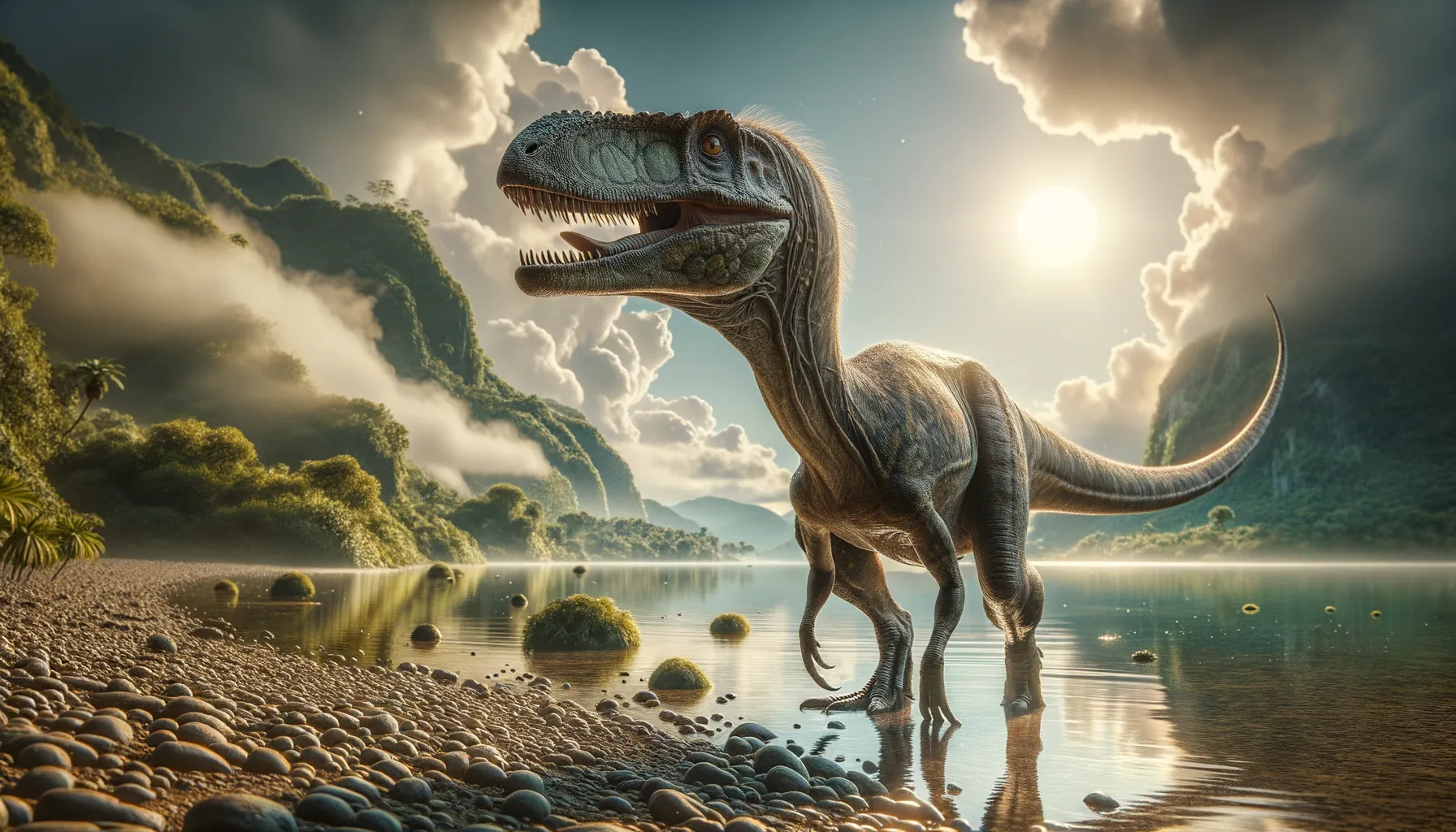
Limusaurus
A beak evolution that shaped history.
Period
triassic
Length
Around 1.7 meters (5.6 feet) long.
Height
Approximately 1 meter (3.3 feet) tall.
Weight
Around 15 kilograms (33 pounds).
Limusaurus was a small theropod dinosaur with distinctive beak-like jaws, known for its evolutionary transition from teeth to beak. This unique feature makes it a fascinating subject in the study of dinosaur evolution. It lived during the Late Jurassic period and primarily inhabited what is now known as China. The change from a juvenile with teeth to a toothless adult provides valuable insight into the dietary adaptations over its lifespan.
Diet
As a juvenile, Limusaurus had teeth and likely consumed a diet that included small animals or insects. As it matured, it lost its teeth and adapted to a plant-based diet, feeding on vegetation.
Hunting
Limusaurus did not exhibit typical hunting behaviors since its diet shifted from carnivorous in its youth to herbivorous adulthood. Initially, it might have caught small prey but transitioned to foraging for plants as it grew older.
Environmental challenges
Limusaurus faced significant environmental changes that influenced its dietary evolution. The shift from young forested areas to more open landscapes would have required adaptations in feeding habits. Competition for resources with other herbivorous dinosaurs likely impacted its survival strategies. Climate fluctuations in the Late Jurassic could have affected food availability, further driving dietary adaptations.
Speed
Relatively slow, adapted for maneuverability in dense environments.
Lifespan
Estimated to be around 10 to 20 years.
First discovery
Unearthed in 2009 in the Junggar Basin, China.
Fun Facts
- Limusaurus was a small, plant-eating dinosaur that lived around 160 million years ago during the Jurassic period.
- Unlike many of its toothy relatives, Limusaurus was toothless as an adult but had teeth as a youngster, showing a rare example of ontogenetic tooth loss.
- Fossils of Limusaurus were discovered in the Shishugou Formation in China, providing insight into the diversity of dinosaur life in that region.
- Limusaurus is part of the theropod group, which typically includes carnivorous dinosaurs, but it was one of the few that had evolved to eat plants.
- The name Limusaurus translates to 'mud lizard,' referencing the swampy environment where its fossils were found.
- Its unique diet and tooth transition make Limusaurus an interesting case in the study of dinosaur evolution and dietary adaptation.
- Scientists believe that Limusaurus may have used a beak-like mouth to process plant materials, similar to modern birds.
Growth and Development
Limusaurus displayed fascinating changes in growth, notably losing its teeth as it matured. This tooth loss suggests a significant shift in feeding patterns and social roles. Young individuals may have been more self-reliant hunters, while adults focused on different feeding strategies. Understanding its development helps scientists trace evolutionary pathways in theropods.
Habitat
Limusaurus lived in semi-arid environments with seasonal rivers and diverse vegetation. The region supported a variety of flora indicating a rich ecosystem suitable for herbivorous diets. This habitat was part of an active geological and volcanic area, creating dynamic ecosystems with periods of lush plant growth.
Interaction with other species
Limusaurus likely shared its ecosystem with other herbivores and small theropods. It may have competed with these species for plant resources, influencing its ecological niche. This interaction could have driven the evolution of its unique dietary adaptations over time.
Natural lifespan
Limusaurus had an estimated lifespan of 10 to 20 years.
Reproduction
It likely reproduced via laying eggs, similar to other theropods. Nesting behavior remains speculative, but communal nesting or parental care could have been possible. Fossils do not provide definitive evidence for specific reproductive behaviors.
Social behaviour
Limusaurus may have exhibited gregarious behaviors, potentially living and traveling in groups. This social structure could have provided protection against predators and helped in foraging. The extent of its social interactions remains a topic of research and exploration.
Fossil locations
Limusaurus fossils have been predominantly found in the Shishugou Formation, China. The discovery site provides critical insight into the ecosystem dynamics during the Late Jurassic. These fossils contribute valuable information about theropod diversity in the region.
